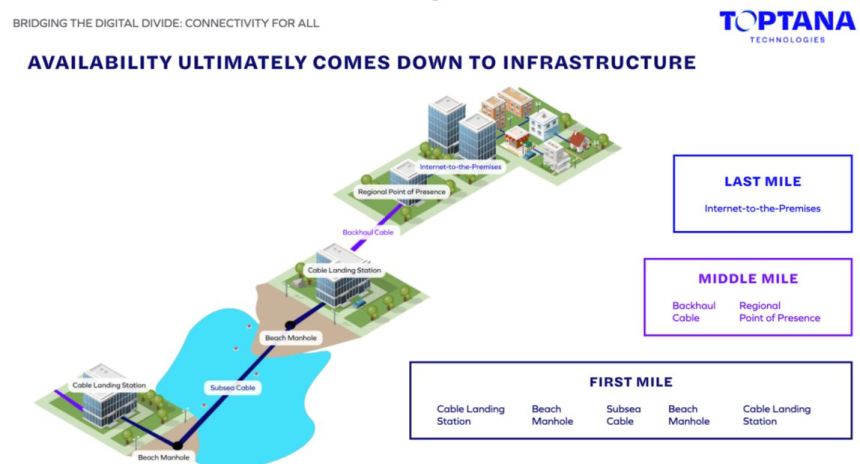How to Close the Digital Divide
By Tyson Johnston
We live in a world where cars are starting to drive themselves and AI is transforming the way people work. But not everyone has access to such technology; simply getting a reliable internet connection has remained a frustrating impossibility for some. That’s the case for roughly 42 million Americans, according to data from BroadbandNow, who have no internet access. There is also frustration among the 157.3 million people who don’t have access to broadband-level speeds. Technology continues to advance, but, as it does, the digital divide continues to widen.
This problem is predominantly an issue in rural and tribal areas, where lower population density makes the investment in broadband infrastructure difficult for for-profit companies to justify. For years, this issue has affected my people—the citizens of the Quinault Indian Nation (QIN)—and our neighboring communities. So, we have decided to take the bold move to launch a venture that will not only bring connectivity to unserved and underserved markets across Washington state and Oregon but will also serve as a new revenue-generating business in our nation’s portfolio, reinforcing our self-sustaining economy. Toptana Technologies—rooted in the Quinault words for beach and shore—was formally launched in 2022 with the aim of bringing connectivity to all.
Companies and governments have previously attempted to bridge the digital divide but have only advanced short-term, limited solutions. The bigger picture need for the underlying infrastructure to close the gap once and for all is a more complex problem that has, unfortunately, remained mostly unmet on tribal and rural lands.
The goal of closing the gap has potential long-term economic impact. According to a study commissioned by Amazon Web Services and the U.S. Chamber of Commerce, the increased access to digital tools could add $116.7 million to annual wages and add nearly 2,500 jobs per year in Washington state alone.
In order to make it happen, the infrastructure of the internet needs to be in place. This is the first, middle and last mile required for all connectivity around the globe.
The timing could not be better because the need for additional cable landing stations—the place where subsea fiber cables connect to the mainland—is greater than ever, especially for transpacific connections. And Washington state hasn’t had new submarine fiber-optic cables land in over 20 years, while Oregon and California have laid 14 in that period.
As a sovereign Indian nation with coastal access and adjudicated ocean rights on Washington state’s coast, the Quinault Indian Nation, which owns Toptana Technologies, is able to make this critical first- and middle-mile infrastructure a reality.
Toptana’s team hired numerous third-party engineers and environmental consultants with local knowledge to conduct the necessary studies to make sure the project was feasible and environmentally safe. When the time comes to lay cable, a cable-laying ship will trench, lay and bury cables nearshore, a process that typically takes several days. After this, sediment on the ocean floor resettles and the cables are dormant beneath the surface, much like utilities on land. Fisheries are given exact specifications on the placement of the cables in order to avoid the possibility of damage from activity such as bottom trawling. We’ve been grateful to our friends at the Oregon Fishermen’s Cable Committee for providing the insights and wisdom they’ve gathered in more than two decades’ worth of fishing over Oregon’s many subsea cables.
We’re excited for what’s to come and the impact this connectivity will have, both for our tribe and for other rural communes in the Pacific Northwest. Building the infrastructure needed to bridge the digital divide will mean better healthcare, education, business opportunities, job prospects and safety programs. Together, these improvements to quality of life will create upward mobility. All this will be possible as a result of the new opportunity to connect to other places around the globe.
Toptana Technologies is defined by compelling firsts. It will steward the first subsea cable landing station in Washington in more than two decades in a first such project fully owned by an indigenous nation, and it represents the first Quinault business venture branching outside of our borders. This is also the first opportunity to enable and expand connectivity to underserved communities in our region by enabling local providers to provide high-speed access to broadband internet. We look forward to the journey ahead and hope you will follow along and help support our mission of making broadband accessible for everyone.
Tyson Johnston is the chairman of the board and head of development for Toptana Technologies, where he leads the enterprise development of Toptana and its subsea and terrestrial network solutions. He is also the executive director of self governance and former vice president of the Quinault Indian Nation, having served in elected office for the past decade. Johnston has held several leadership positions on behalf of the Quinault Business Committee. He has worked closely with local, state and federal governments, forming collaborative government-to-government relationships to effectively co-manage resources in the Pacific Northwest. He is an alumnus of the University of Washington, where he studied political science and American Indian studies. He is a life-long resident of Taholah, Washington, the coastal headquarters of the Quinault Indian Nation’s government.

